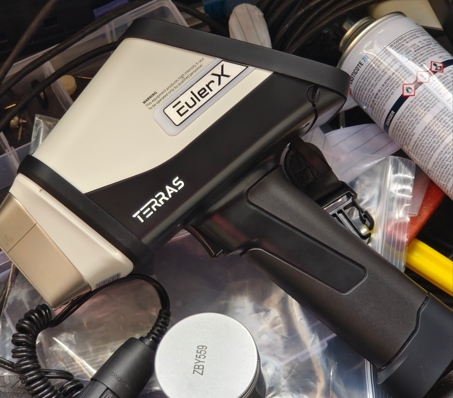
XRF Technology
A high-tech enterprise focusing on the development and application of X-ray technology products, committed to becoming a leading supplier of X-ray industrial testing solutions.
The Science Behind XRF Handheld Alloy Analyzers and Their Accuracy
In the realm of material analysis, X-ray fluorescence (XRF) handheld alloy analyzers have emerged as pivotal tools for identifying and quantifying elements in various alloys. These devices offer rapid, non-destructive testing with impressive accuracy, which is crucial for industries such as manufacturing, recycling, and metallurgy. In this article, we will explore the science behind XRF handheld alloy analyzers and delve into how they achieve their accuracy.
Understanding XRF Technology
X-ray fluorescence (XRF) is a powerful analytical technique used to determine the elemental composition of materials. The principle of XRF is based on the interaction between X-rays and the atoms in a sample. Here's a simplified breakdown of how XRF works:
Excitation: The handheld analyzer emits X-rays, which bombard the sample material.
Fluorescence: These X-rays excite the atoms in the sample, causing them to emit secondary X-rays (fluorescence) characteristic of the elements present.
Detection: The emitted X-rays are then detected by the analyzer, and their energy levels are measured.
Analysis: The energy levels correspond to specific elements, and the intensity of the emitted X-rays is used to quantify the concentration of each element.

Components of Handheld XRF Analyzers
Handheld XRF analyzers are compact devices equipped with several key components:
X-ray Tube: Generates X-rays that excite the sample.
Detector: Measures the fluorescence emitted by the sample. Common types of detectors include Silicon Drift Detectors (SDD) and High-Purity Germanium (HPGe) detectors.
Spectrometer: Processes the detected signals to determine the elemental composition.
Software: Analyzes the data and provides results in a user-friendly format.
Accuracy of Handheld XRF Analyzers
The accuracy of handheld XRF analyzers depends on various factors, including the quality of the instrument, the calibration process, and the nature of the sample. Here’s how these factors contribute to their accuracy:
Instrument Calibration: Regular calibration with certified reference materials ensures that the analyzer provides accurate and reliable results. Calibration accounts for any variations in the X-ray tube output or detector response.
Sample Preparation: While XRF is a non-destructive technique, sample preparation can still influence accuracy. Ensuring the sample surface is clean and representative of the material being tested is crucial for precise measurements.
Detection Limits: Handheld XRF analyzers have detection limits that can vary based on the elements being measured and the concentration levels. Advanced analyzers with high-resolution detectors offer better detection limits and accuracy.
Matrix Effects: The composition of the sample can affect the accuracy of XRF measurements. The presence of interfering elements or compounds can impact the fluorescence signals. Modern analyzers use sophisticated algorithms to correct for matrix effects and enhance accuracy.
Environmental Factors: External factors such as ambient temperature and radiation can also influence measurements. High-quality analyzers are designed to minimize these effects and maintain accuracy in various conditions.

Applications and Benefits
Handheld XRF analyzers are invaluable across multiple sectors:
Manufacturing: Ensuring the quality of alloys and verifying material specifications.
Recycling: Identifying metals in scrap to optimize sorting and recycling processes.
Metal Identification: Quickly determining the composition of unknown or suspect metals.
The key benefits of handheld XRF analyzers include their portability, ease of use, and the ability to provide immediate results. These advantages make them indispensable tools for professionals who require precise material analysis on the go.
The EulerX 900 series has proved to be an excellent choice for metal analysis in a wide fields, providing fast, accurate results directly to the user. Thanks to its cutting-edge electronics and sophisticated mathematical algorithms, the EulerX 900 series ensures superior measurement quality within seconds. The applications of the EulerX 900 handheld are extensive, covering not only solids but also liquids and powders. The X-ray technique preserves the integrity of the samples, unlike destructive testing methods.
Conclusion
The science behind handheld XRF alloy analyzers is rooted in the sophisticated interaction of X-rays with matter and the advanced technology that enables precise detection and analysis. By understanding the principles of XRF and the factors that influence accuracy, users can better appreciate the capabilities of these devices and make informed decisions about their application. As technology advances, handheld XRF analyzers will continue to evolve, offering even greater accuracy and functionality to meet the demands of various industries.
Join Us
Subscribe to our email list for updates & promotions.



